You’ve heard of cast iron pans. You’ve probably seen your grandparents use one. But I’m willing to bet you’ve never heard of hard nitriding cast iron skillets. They’re a well-kept secret in the cooking world, and I’m here to tell you why this technology makes for the best cast iron pan you can possibly buy.
First, let me say something that might get me in trouble with cookware purists: traditional cast iron pans are a hassle.
I’ve read all about their amazing heat retention and heirloom quality. But honestly, I don’t want a pan that weighs a ton and needs to be babied every time I clean it. I want the power of cast iron without the Olympic-level weightlifting and complicated maintenance.
My search for a better alternative led me to a fascinating industrial process called nitriding and a fantastic company called Lehman’s that sells one of the few nitrogen-hardened skillets available today.
Key Takeaways
Superior Durability Without the Hassle: Hard nitriding infuses nitrogen into the cast iron surface, creating a rust-proof, scratch-resistant layer that’s tougher than traditional cast iron—no mandatory seasoning required.
Lightweight and Easy to Handle: These skillets are significantly lighter (e.g., a 10-inch version weighs about 2.3 lbs vs. 5.35 lbs for traditional ones), making them more maneuverable for everyday cooking without sacrificing heat retention.
Low Maintenance and Versatile: Safe for metal utensils, soap-and-water cleaning, and optional oil for enhanced non-stick performance; long-term use (up to a year) shows it stays in excellent condition with minimal effort, like using a chainmail scrubber.
Affordable and Accessible Option: Lehman’s nitrogen-hardened skillets are the best value at $25–$35, outperforming pricier alternatives and offering a game-changing upgrade over traditional pans.
Table of Contents
What is Hard Nitriding, Anyway?
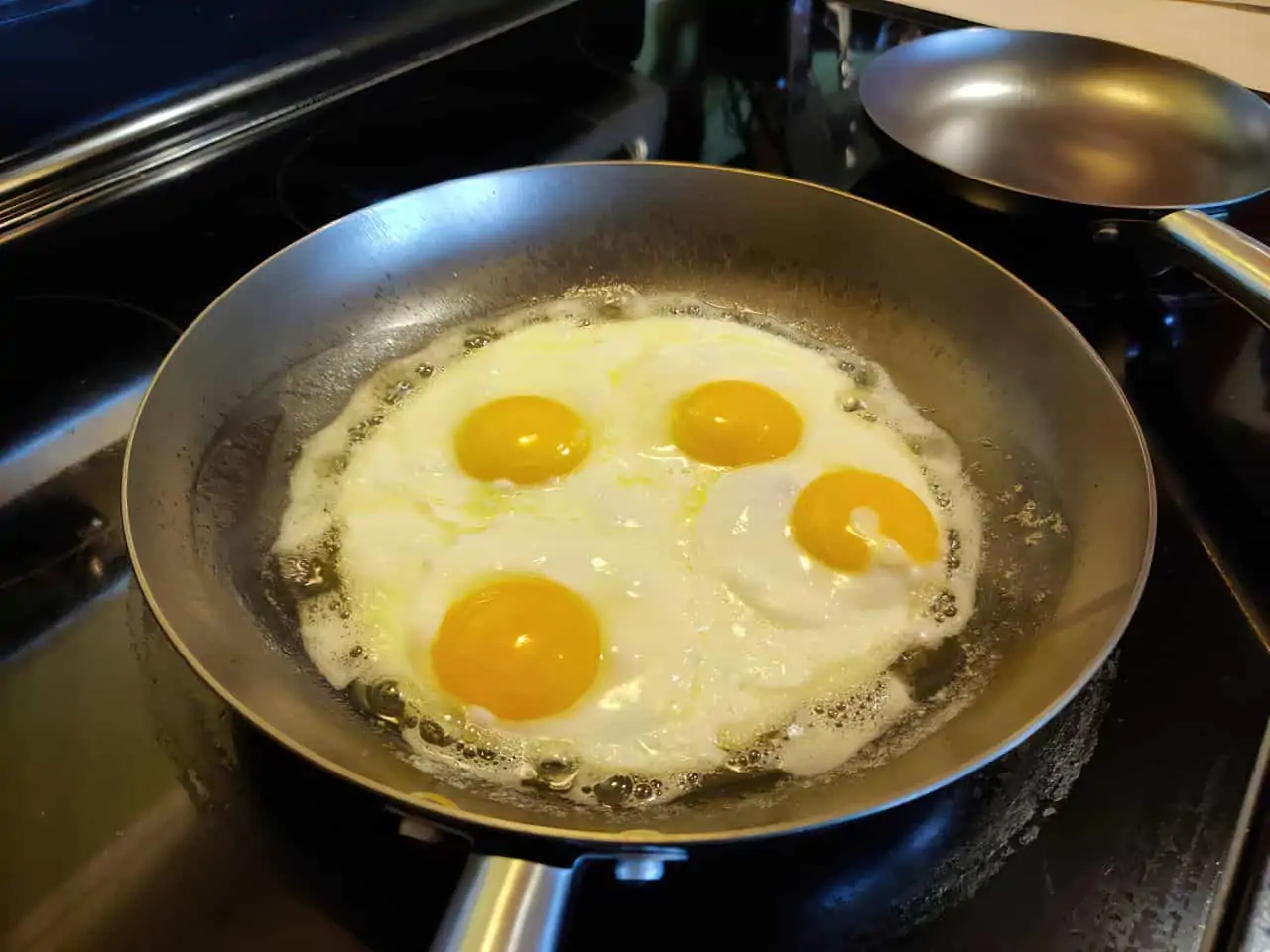
Hard nitriding is a type of heat treatment that radically changes the surface of metal. It’s not a coating like Teflon that can scratch or peel off. Instead, the iron is heated to temperatures around 1,000°F and infused with nitrogen atoms. This creates a new, ultra-hardened case on the surface of the pan.
Nitriding is a heat-treating process that diffuses nitrogen into the surface of a metal to create a case-hardened surface. These processes are most commonly used on low-alloy steels. They are also used on titanium, aluminum, and molybdenum.
Wikipedia
This process, sometimes called ferritic nitrocarburizing, is trusted in heavy industry to strengthen critical parts that can’t fail. Think engine crankshafts, industrial gears, and firearm components. When applied to cookware, the result is a pan that is incredibly durable and resistant to damage.
Why Hard Nitriding Cast Iron Skillets Are Superior
So, what does this industrial process actually mean for your daily cooking? It means you get all the benefits of cast iron with none of the classic drawbacks.
They’re Incredibly Lightweight
The first thing you’ll notice is the weight. Traditional cast iron is famously heavy, making it difficult to lift and maneuver. Nitriding allows for a much lighter design without sacrificing durability.
For example, a traditional 10.25-inch Lodge cast iron skillet weighs around 5.35 pounds. In contrast, the 10-inch Lehman’s nitrogen-hardened skillet is significantly lighter. This makes it much easier to handle, whether you’re tossing vegetables or moving the pan from the stovetop to the oven.
Forget Seasoning, They’re Naturally Rust-Proof
The biggest headache with traditional cast iron is the constant need for seasoning. That delicate layer of polymerized oil is the only thing protecting the iron from turning into a rusty mess.
The nitrogen-infused surface of a hard nitriding cast iron pan is inherently rust-resistant. You can wash it with soap and water without a second thought. While you don’t *need* to season it for protection, adding a thin layer of oil can still slightly enhance its non-stick properties.
A Surface That’s Tough as Nails
The nitriding process creates a surface that is exceptionally hard and scratch-resistant. This means you can finally use metal utensils on your skillet without fear. Go ahead and use that metal spatula; you won’t hurt it.
This durability is a major advantage over traditional non-stick pans with delicate coatings that can be easily damaged, often requiring replacement every few years.
| Feature | Hard Nitriding Cast Iron (Lehman’s) | Traditional Cast Iron (Lodge) |
|---|---|---|
| Weight | Significantly Lighter (10″ is ~2.3 lbs) | Heavy (10.25″ is ~5.35 lbs) |
| Rust Resistance | Extremely High | Low (requires seasoning) |
| Seasoning Required | No (optional for performance) | Yes (essential for maintenance) |
| Utensil Safety | Metal utensils are safe | Metal utensils are safe |
| Maintenance | Low (Wash with soap and water) | High (No soap, must keep dry and oiled) |
How Does It Look After Many Months?
Here’s a little update now that I’ve been using the pan for more than 3 months. In short, it still looks fantastic. I’ve used it hundreds of times, and it remains in great condition. I haven’t seasoned it or done anything special, and it’s still wonderfully non-stick.
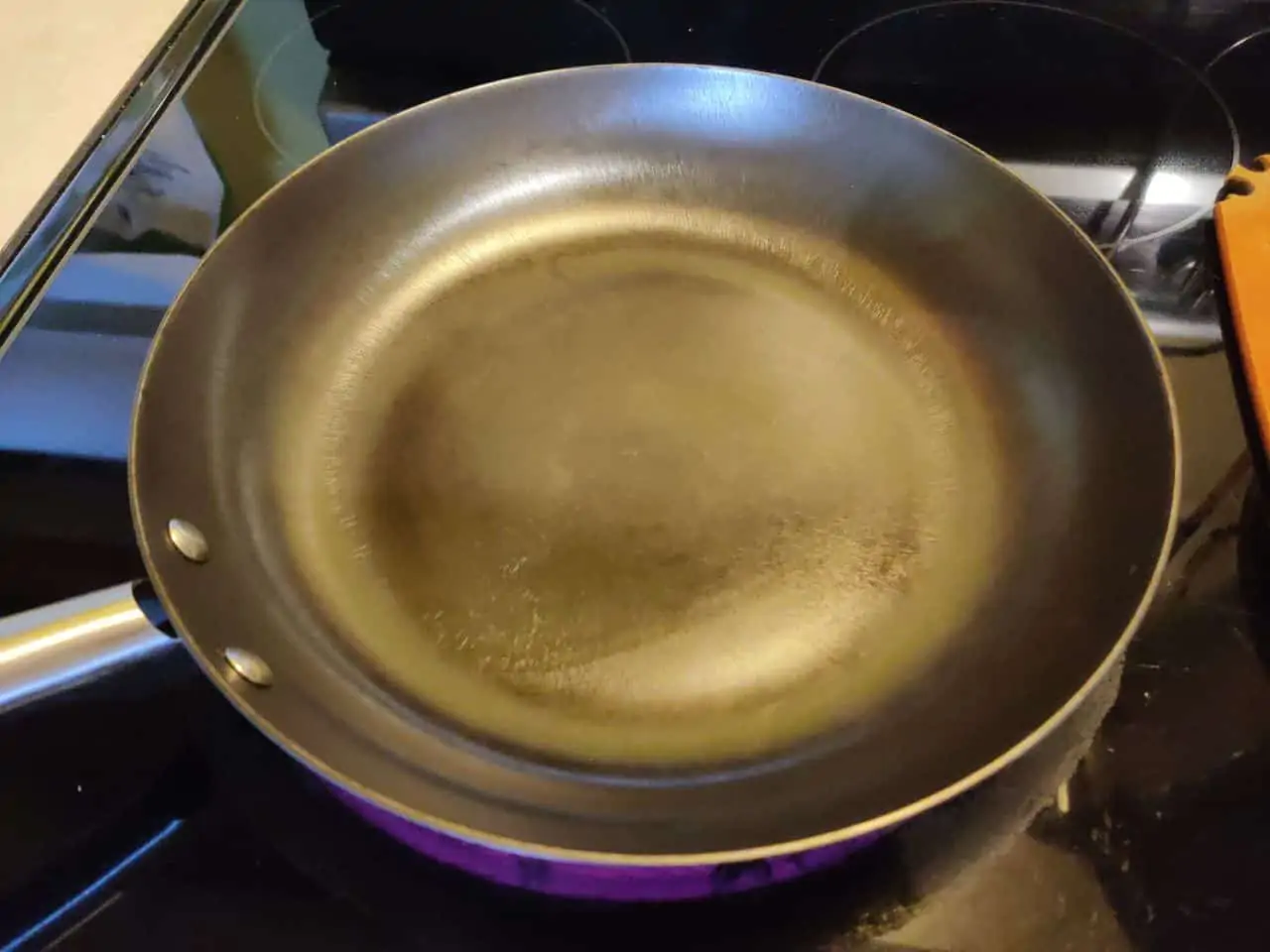
One tool I’ve found essential is a chainmail scrubber, sometimes sold under brand names like “The Ringer.” These are available for under $10 and make cleaning off any crispy bits a total breeze without harming the tough nitrided surface.
The surface continues to be fantastically non-stick, which is pretty exciting for me. I’ve never had a pan that I could use this little oil in and still get such consistent results.
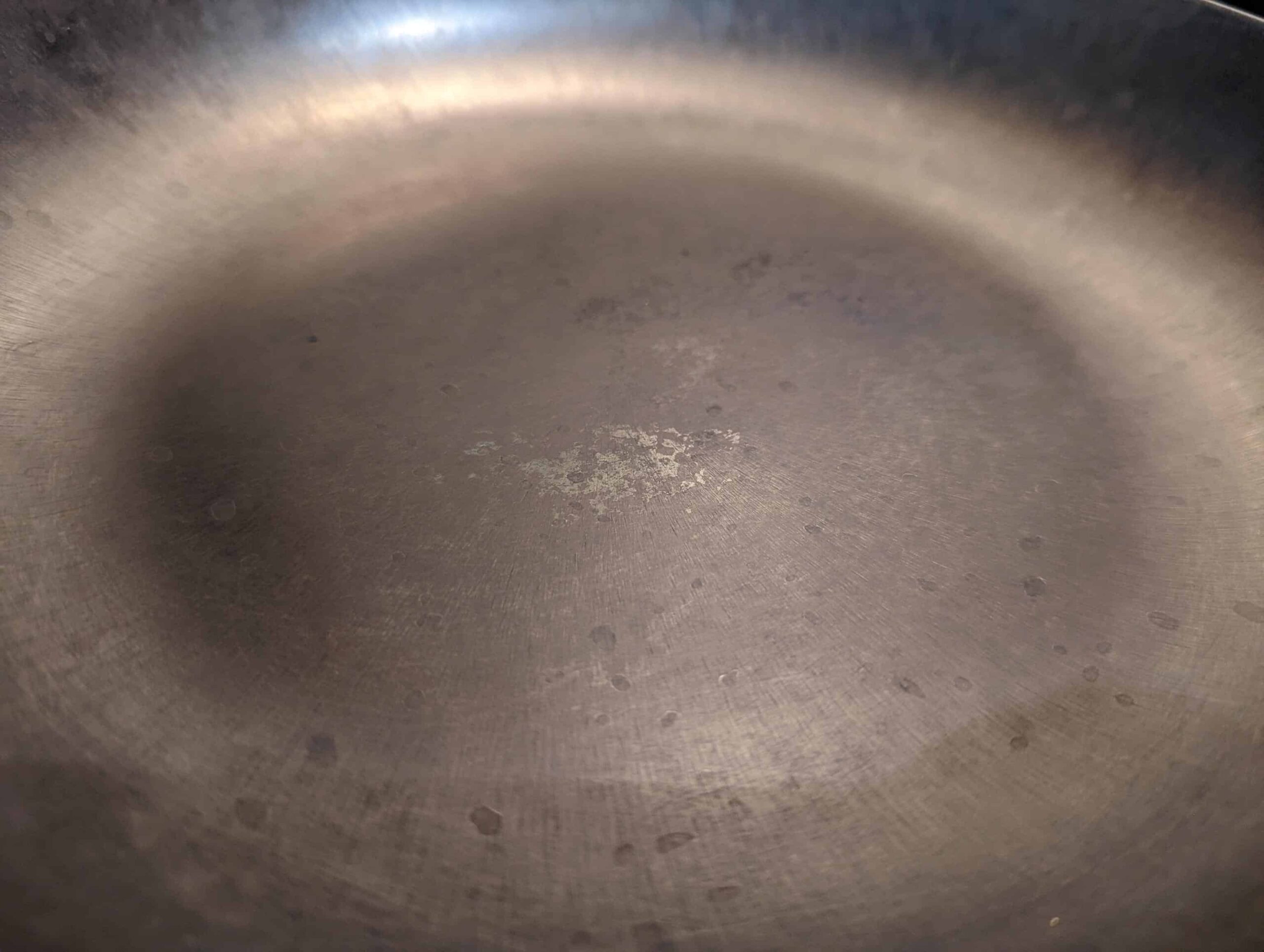
And here’s another update after approximately 6 months.
Yes, it continues to be nicely non-stick. I just use the previously mentioned chainmail to scrub it as needed, and I’m ready to go for my next meal.
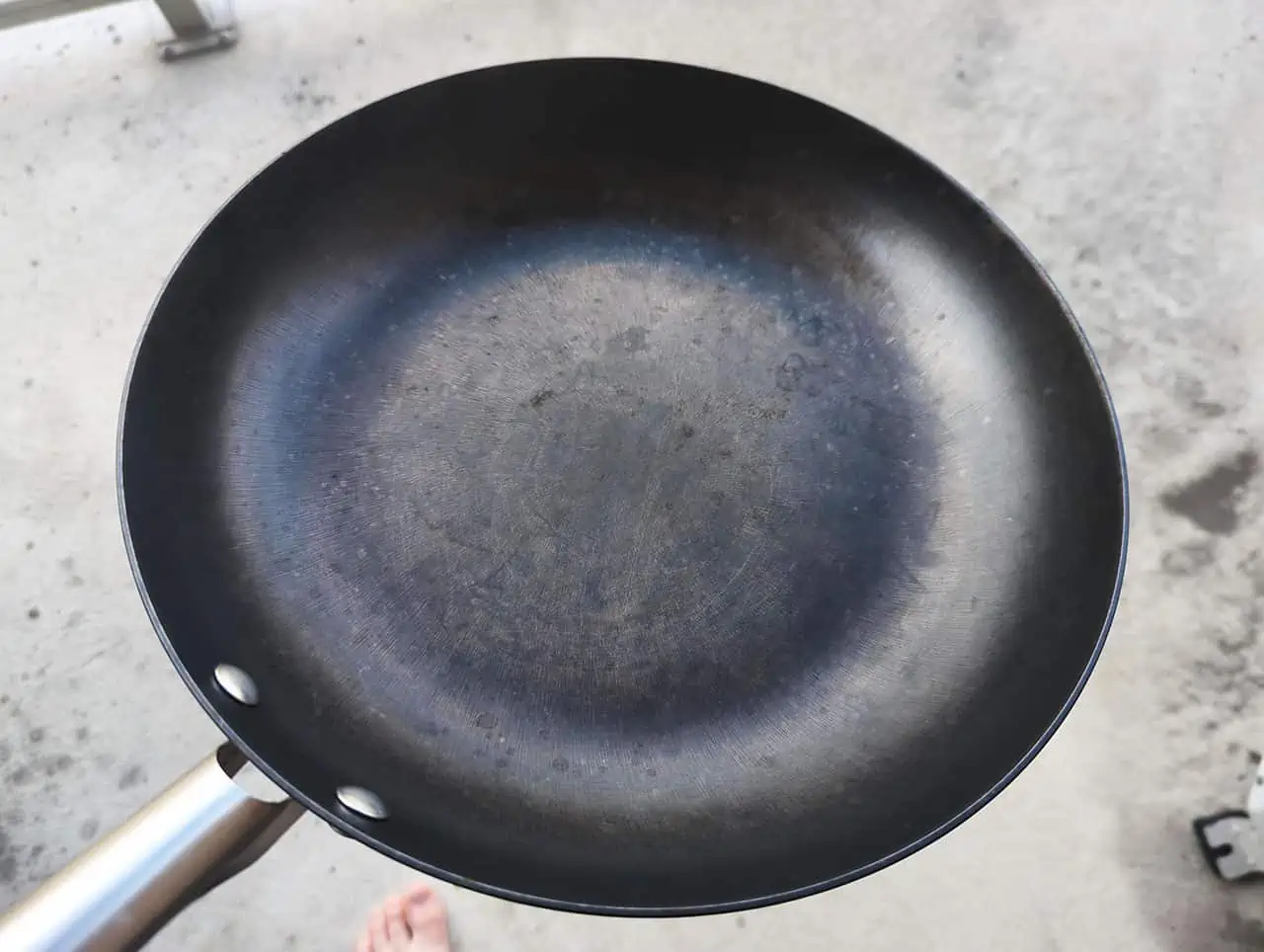
And here’s how it looks after just under a year. Still working great!
Where Can You Buy a Nitrided Cast Iron Pan?
There are only a handful of these pans on the market, and the skillets that Lehman’s makes are clearly the best value. A quick search on forums like Reddit shows that other brands can be hit-or-miss, but the Lehman’s pans are affordable and extremely well-made.
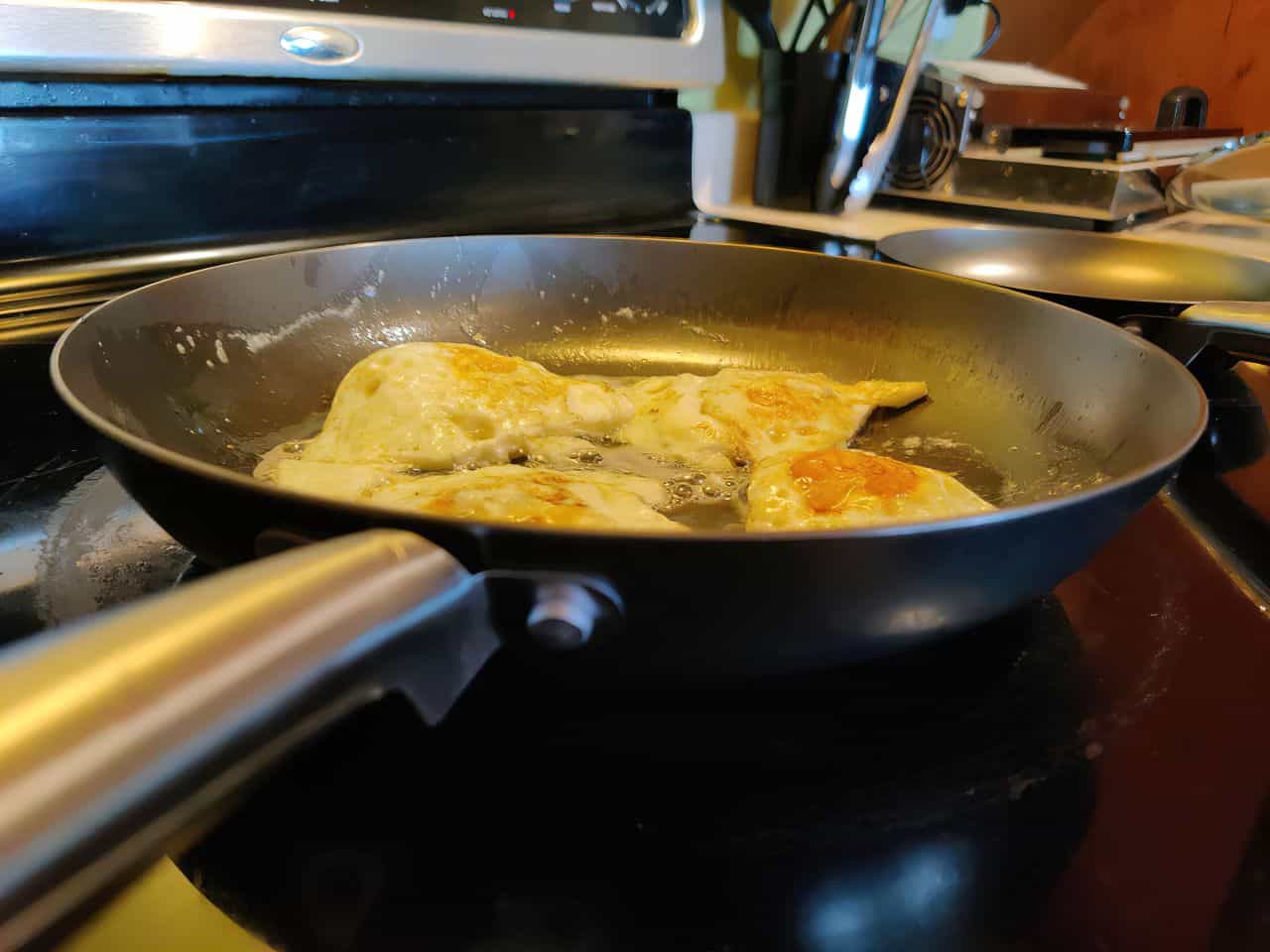
While you might find other companies that use this technology, like Australia’s BARE Cookware, they are often more expensive or harder to find in the U.S. Lehman’s remains the most accessible option for most people.
My only gripe is that I would love to see them release a larger size. The current options are great, but a 12-inch version would let me replace every other pan in my kitchen.
At around $25 to $35 depending on the size, you have nothing to lose. I can assure you I’ve never been this excited about a frying pan before. Once you try a lightweight, no-fuss hard nitriding cast iron skillet, you’ll never go back.
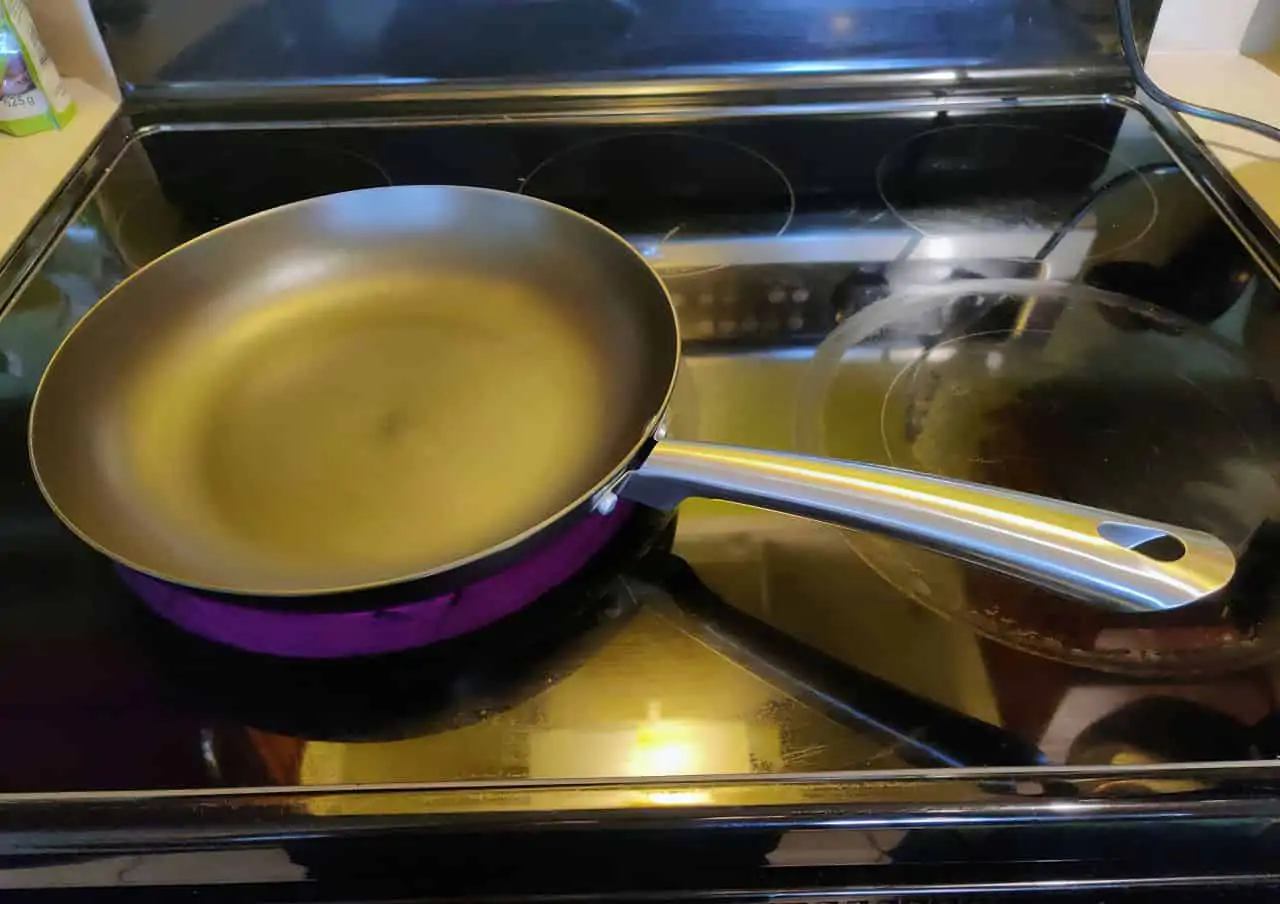

meh… I’m not sold on these. And if you are having that much trouble with cast iron, then you are doing something wrong. And you write this article like you are the first one who has every seen these pans. And if you can’t find bigger than 11″, there are at 12″ pans in Marshall’s under the Brandani name. I think you wrote this article just for filler without really having any expertise on the topic. Also, you give no real back-up to your claim why Lehman’s is the best, and their whole store is kind of uppity and annoying anyway. And whatever the basic graphics under your ads on your page are… childish.
What is it about these pans that you’re not sold on? It sounds like you’re an expert, so I’m assuming you’re either a chef, or work on the manufacturing/metallurgy side? Since my article is clearly filler and I have no idea what I’m talking about, I would love to hear from someone with your knowledge and expertise.
The Brandani brand has almost universally terrible reviews no matter where I looked, which is why I wasn’t interested in their 12″.
Have you used it? The pan turns completely black from the oil. How do you recommend fixing that? I agree with Bob, there isn’t much substance to this review.
Have I used the pans? Yes, of course. These are my photos.
I’m not sure what you mean about the pan turning black from the oil. I mean, it’s black to begin with from the nitriding process.
Hi Chad, before my deep dive, I just want to point out that some of the criticisms to your post are uncalled for. There isn’t much written about these hard nitriding pans and your article is one of only a handful that I could find. So thank you for writing about these.
I’m a home cook and a collector of cookware. I own multiple Wagners, Griswolds, and BSRs along with a Matfer and a De Buyer for my daily users. I’m a seasoning veteran and know how to care for my cookware. I keep a lye bath in my back porch and perform cast iron restorations for myself and family/friends alike. I’m also always on the lookout anything new and obscure.
I saw a Brandani pan a couple weeks ago at Home Goods/Marshalls for $17. These pans are VERY different indeed. At first glance thought it was carbon steel that had been mislabeled. It did look very different from any carbon steel pan I ever saw though and it had zero flex to the material. So I immediately bought one went into research mode. I’ve used it every single day since then and want to share my cliff notes here in case other people wanted to learn more about these pans….
First off, these ARE cast iron. It’s just not casted in the traditional sand molds that we’re accustomed to here in the US. Its manufactured using a process that is sort of a hybrid between casting and stamping. Molten iron is poured into the lower half of a pan mold. Then the top half of the mold is pressed down to stamp out the round shape. After that, it is milled and polished before going through the hard nitriding process. The hard nitriding process is a treatment, not a coating. It does not affect food anymore than any other cast iron does. The equipment needed to create this pan is extremely expensive… I’m guessing that’s one of the reasons you don’t see more companies creating them.
Now, I’m no metallurgist but apparently this method of manufacturing along with the hard nitriding produces a pan that is super durable, and resistant to warping under sudden temperature changes. You know that grey residue people keep mentioning? That’s just oxidization from the fact that this is cast iron and that’s what unseasoned cast iron does. So despite the hard nitriding process, this pan still needs to be seasoned and treated like any other cast iron.
Once that’s done, what you get is the best of both worlds… The excellent thermal mass of cast iron with the weight of carbon steel. On top of this, It doesn’t warp or rust, and when properly seasoned is as nonstick as any other properly seasoned carbon steel/cast iron cookware. It handles high temp cooking like a boss, easy to clean, and is gorgeous to look at. I’m totally sold on these. The first pan has become my new daily user and I bought a second one today so I can run more experiments on it including seeing how it reacts to a lye bath.
So far I’m blown away by how versatile these pans are. Mine has a hollow stainless steel handle that’s been riveted to the pan so it moves easily between the stovetop and the oven. If anybody reading this is on the fence here’s what I recommend….
DO NOT buy this pan if you are not already familiar with the typical maintenance of carbon steel/cast iron cookware. It needs to be seasoned before you use it, I don’t care what the label says. Search on youtube if you want to learn how to season a pan. And despite it being called “lightweight”, it still has some heft to it. My 10″ pan was about 3.2 lbs. That’s still heavier than an aluminum pan. So if that’s too heavy for you to maneuver with, then either hit the gym or don’t bother with this pan.
For the veteran home cook who is familiar with carbon steel/cast iron cookware, then don’t pass up on a chance to buy this pan. It is deceptively inexpensive for high end cookware. But this will elevate your game. It takes time to get up to temp like any other cast iron and will retain it so not quite as responsive as carbon steel. It is seriously next level stuff though and you’ll feel the difference right away. I’m honestly shocked that we don’t see this type of cookware from other companies. I really do think it is revolutionary and totally agree with Chad that these are superior to traditional cast iron in every way.
Agreed Chad and Jonathan! Great material for pans. I have an 8” Brandini and it is truly non-stick, lighter than cast iron but heavier (slightly) than carbon steel.
I definitely plan to purchase a larger couple of 11 or 12 inch pans.
Those are NOT “cast iron” nitrided pans. They are carbon steel.
I mean, ‘cast iron’ is literally in the product title…
Hello
I just bought one 8in for eggs etc. I just wash it really well to get the black stuff off . So not I wash it nothing comes off . Then i heated added oil gave it a min. cooked 3 eggs over easy . No sticking it was as good as my carbon steel de byers without all the care to keep up seasoning. Will see over time how it holds up . I think it will ….
My wife and I have been cooking with the Lehman 11” skillet now for 7 weeks. We seasoned it one time in the oven for one hour. The first few times some things stuck to it but over time it has become nonstick. Just made some pizza steaks for lunch. Cooked them perfectly. Made fried potatoes and eggs this morning. The skillet browns beautifully. Just wish they made a pie pan like this. I wash the skillet with soapy water and then dry immediately. Very easy to care for. I’ve noticed that you can now buy Lehman’s Nitrogen Hardened Cast Iron
Skillet on Walmart.com and Amazon. Will be buying another as soon as we visit Holmes County again.
I purchased a Brandani omelette pan a few years ago at Marshals in Toronto.
I’ve enjoyed using this pan since it doesn’t have the heft of cast iron. Eggs literally do not stick to the surface, and true to form it doesn’t warp under high heat use (e.g. caramelizing Mushrooms). I’ve managed to warp my carbon steel this way and have to re-flatten them periodically.
I was hesitant about the Lehman product, but will definitely consider giving that product a try since I haven’t been able to find a larger 11″ Brandani pan.
I haven’t had any concerns about the Brandani brand. I don’t know what others might have experienced. It seems to me that you can’t go wrong with either Brandani or Lehman, considering own experience with Brandani and the positive reviews of Lehman pans.
The bottom line for me is that I prefer the weight of nitriding cast iron pans over traditional cast iron and the heat management and warping stability over carbon steel.
Thank you for this article and all the contributing respectful, informative and researched commentary. (some commentary has not been respectful). I did some prior research as well and agree with the post from Jonathan. Love the skillet, got at Home Goods this December. Going for another for my dad. The small one is perfect for cooking a single portion. Use it every morning for eggs!
I appreciate your blog post on why cast iron skillets are superior in every way. You’ve done a great job of explaining what nitriding is and how it’s related to the benefits of cast iron skillets. I was also happy to learn that you were familiar with the benefits of cast iron pans and how they’re better than non-stick aluminum pans. I also loved the part about how you wanted to buy a lightweight cast iron pan to use instead of the cheaper, non-stick aluminum pan. It’s so true that you get what you pay for.
Thank you for this article. I just bought the 11″ pan from Lehman’s. Well, it is 11″ at the top, but it’s tapered and only 7.25″ at the bottom. Smaller than what I thought it would be, they offered no measurement on their website, other than the 11″.
I washed it and seasoned it @ 350 F in the oven, like they recommend. When I take a paper towel, black residue is coming off. I contacted them and they said that this is normal and harmless, and it can take up to 6 months until it’s gone.
I bought it because it’s lightweight, since I am not able to lift those heavy cast iron pans.
I saw them at Amazon, and they said there, that they are not oven safe. It’s a bit confusing. It says nothing on the package about oven use or temperatures in general.
I have not cooked in it yet, because of the black residue. I don’t want that in my food. Any idea how to get rid of it? I want to like this pan!
Unfortunately, I’m not sure how to get rid of the residue. I fried some eggs with it a few times, and it was gone after that.
Thank you, Chad, for your response. I guess I will have to do the same! 🙂
Check out the Japanese line of carbon steel pans called Cocopan. They are advertised as having an iron nitride heat treatment, which I didn’t know was a thing. I did end up buying one and am very impressed with the quality of the pan as well as how it cooks. My only concern is the nitriding process. As I understand it, it is not a coating so there isn’t the same health risks as the coated non-stick pans have with the off gasing of toxic chemicals into the food?
Thanks for the heads up on Cocopan! Japanese products are often very high quality.
Interesting article and comments. I tried not season mine but rust started showing up. So, despite what the product label says, I would season nitriding cast iron pans. I got mine at a discount chain (Winner’s) in Toronto. A great buy.
Thanks for sharing your experience!
Stovetop to Oven option? I’m guessing it can handle the high temps since its cast? any experience with these pans handling it, it is rather thin? The original buyer threw out the packaging to the Brandani, so I have no clue,and i can’t find it on their website.
I’ve seen some comments online about only using wooden utensils? any opinions on that? Thanks to anyone with input!
I bought the Brandani 8″ Skillet at Home Goods a few months back and am just now getting around to using it and doing a little research. First off thanks for this article, I did find it helpful. I’m glad I got the Brandani instead of the Lehmans after watching a youtube video about the Lehmans 11″ which evidently has tiny lines scored in the bottom which for the youtube guy acted as sandpaper on his wooden spatula. That was a huge turn off for me even though I don’t use wood to fry but still I want a smooth bottom. Also did not like the handle on the Lehmans pan that comes with a silicone sheath that wobbles.
I love the hollow stainless steel handle on the Brandani and the smooth frying surface. I cooked sausage in my pan this morning then just wiped the bottom off with a paper towel, put butter in the pan and fried two perfect over easy eggs which I was able to “Flip” over (waffle house cook style). Eggs did not stick even after frying sausage, I can’t do this with my professional Stainless steel pan.
So far I’m very impressed with this pan and yes I also have traditional Lodge brand Cast iron which I will continue to use for cooking cornbread and chicken dressing etc, for that It can’t be beat and yes y’all cast iron is a PIA to care for. You have to want to do that,. Some folks just don’t want or have the time to baby those things.
These are my favorite skillets. Bought an 8 & 10 for my daughter and they have been perfect.Wish I had bought a set for myself when they were easy to find. Lehman’s is the last I saw them.
So grateful for this blog post! There still is really not much information out there on nitrided pans or even brand options. I will go ahead and purchase on in cast iron as well as carbon steel and give them a try.